Install Huzzler App
Install our app for a better experience and quick access to Huzzler.
Join the Huzzler founder community
A community where real founders build together. Verified humans only. No fake gurus, no AI spam.
Join 1,289 founders
Huzzler is a strictly AI-free community
No fake MRR screenshots. Stripe-verified revenue only
Real advice from founders who've actually built
Network with serious builders, not wannabes
 $343/mo
$343/mo
Hi everyone.
I am looking to create a group with everyone who already build or building something. We can share ideas and collaborate so everyone can win.
The group will be limited and have verified people.
If you are interested hit me up in my telegram with the product you build or you are planning to build.
Let's all create amazing things together.
- most people treat their mvp like a product. it's not. it's a test.
- if you're building before validating demand, you're guessing. and guessing adds 3-6 months of wasted time minimum
- mvp doesn't mean "code something fast" - it means "test an offer with real users fast"
Here's what actually works in 2025 if you're a solo founder:
- skip landing pages unless you already have traffic. instead, use a pinned tweet or a google form. quicker. easier to iterate.
- don't touch no-code tools until you've had at least 20 convos or email replies from people saying "i want this now"
- use reddit search + search operators like: site:reddit .com "looking for [your solution]" - that's free customer research
- steal phrases from reddit comments or amazon reviews and use them in your offer copy. it converts better than anything you’ll write
- build your waitlist manually. dm everyone who liked your idea post. not with "buy now" spam - ask what problem they actually have
- treat x (twitter) like a search engine. post your mvp concept + what you’re testing. people will tell you what’s broken in minutes
- post daily. not to go viral. but to gather signal. what hits? what flops? you're not building a product, you're refining a problem.
bonus tip: search your mvp idea on tiktok comments. tons of people explain exactly what they want in plain language. steal that.
Raw truth: no one cares what you're building. they care if it solves something that already bothers them.
validate the problem. validate the willingness to pay. then build.
PS. I give honest feedback about your product/idea so you don’t waste time, money, or effort - get any kind of help you need at ZeroToCustomers .com

 $3.0k/mo
$3.0k/mo
Hey guys, for those who don't know, I'm the founder of Huzzler. Just wanted to make this post to announce the launch of my development agency 😁
You might know, but there are lots of MVP agencies out there. What makes mine different from the others is that it's focused on creating super high-quality products (design and development-wise). I've been coding for 9 years and have created countless enterprise-grade products. I build full stack, web & mobile and even do smart contract blockchain development.
My services are
- Website development (simple and complex)
- Any kind of website integrations
- Beautiful Design & UI
- PWA development
- Native app development with react-native (4 years of professional experience with react-native)
- web3 smart contract development (solidity)
- web3 frontend development with EVM compatible chains
- Hosting
Feel free to check out my agency site on: propulsion.so
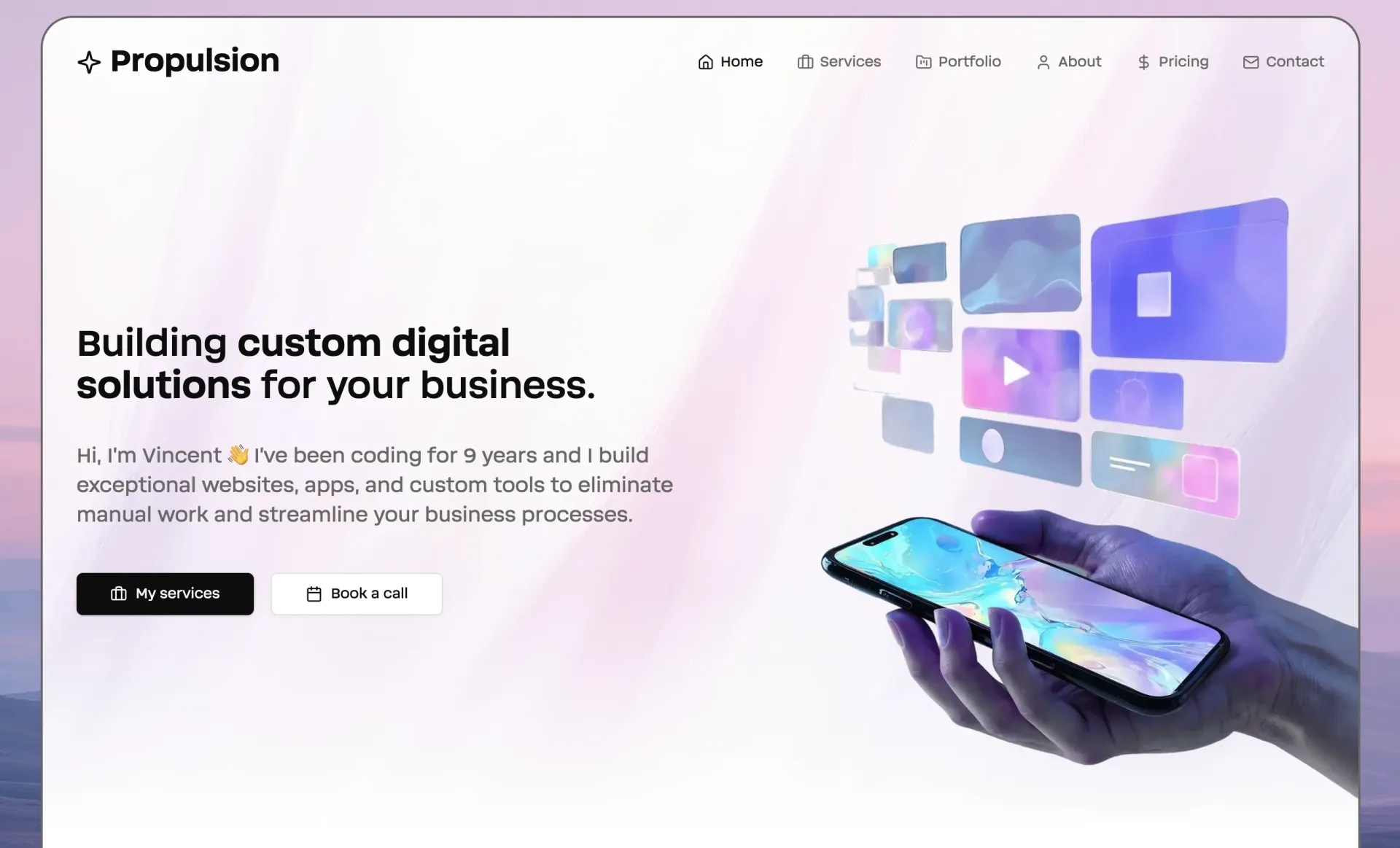
I’m 14 and have been coding for about a year now.
I love building real apps that solve problems — I made a book review app (totally shit), a SIP calculator, and now… something I’m really proud of.
Spenlys — a personal finance app powered by AI that actually gives you advice based on how you spend. Not just charts. Real tips.
I built it to learn next.js and practice but I like it so much that I kept working on it.
I worked on it for 2–3 months and finally launched it on Product Hunt.
Nothing happened.
No comments. No feedback. No upvotes.
It felt like shouting into the void.
I posted on Reddit - auto-removed.
On X - ignored.
On LinkedIn - 2 impressions.
Meanwhile, some chrome extension someone made in 6 hours was trending.
I thought: maybe my product isn’t good.
But honestly, I think I just don’t know how to reach people yet.
And that’s been the hardest part of all this - getting noticed when starting out.
Still, I’m proud.
I learned more in these 3 months than from any tutorial.
And I’m not giving up. I’ll keep building, keep launching, and someday I’ll figure this part out too.
- Don’t track everything. just track these 3:
- how many indexed pages you’ve got (google search console → pages → filter by “indexed”)
- clicks & impressions from ai answers (google search console → performance → filter “search appearance” for ai overviews)
- which urls get traffic from non-branded keywords (click performance → filter out your brand name)
- use gsc console bulk export (go to settings → turn on bigquery export)
- now you get daily data without clicking 20 tabs like a robot
- Want ai results? use raw text. no fluff, no fancy visuals
- ai overviews in search pull clean, direct answers
- they don’t care about pretty formatting, just the info
- if you write, write like you're explaining something in discord. clear and blunt.
- use a site:yourdomain .com search every 2 weeks
- google hides your pages when it wants. this tells you what’s actually showing up
- Want distribution without blog posts or video? post short value drops on reddit, twitter, hacker news
- link to your tool, landing, or how-to page
- this still gets indexed + picked up by ai overviews
- avoid self-promo vibe. just be helpful and blunt
- hot trick: set alerts using visualping dot io for ai answers on your main keywords
- it checks if your site is showing up in ai overview boxes
- not 100% reliable but better than sitting around guessing
- If you're using a static site (like with framer, webflow, or custom build), check log files
- look for googlebot visits on new urls
- if no visit in 7 days, something’s wrong with your internal linking
- don’t waste time on rank tracking tools. they lie half the time. use real traffic and query data.
- remember: AI seo isn't about ranking #1 anymore. it’s about getting cited in ai answers. that’s the game now.
do less. measure what matters. keep the loop small.
PS. want your site to rank on llms like perplexity, chatgpt, and grok? grab a free ai seo report at LM-SEO.com

publishing blogs makes zero sense for b2b startups.
all business dudes use ai for information.
unless you got unique insight which is very very valuable, please don't bother with blogs.
create free tools instead.
ps: try lm-seo .com if you want to start ranking higher on chatgpt and other llms.
- i picked one problem i could solve well. no fancy niche, just something real. i made a landing page that looked clean and answered 3 things fast: what it is, who it’s for, and why it’s different.
- posted a plain text breakdown of it on linkedin + twitter. not "here’s my startup", but "here’s the problem, here’s what i built, here’s what i learned". no links in the post. just told the story. link in first comment.
- reused that same story but tweaked it for indie hackers, a relevant subreddit, and a few slack groups. didn’t copy-paste. rewrote it like i was talking directly to each group.
- picked 5 active discussions every week in places my users hang out. didn’t pitch. just dropped value, shared parts of what i learned while building, then naturally linked to it if it made sense. built trust first.
- every new lead that signed up? i checked where they came from and what pages they looked at. if 10 people came from a reddit post, i doubled down on that subreddit and posted again 2 weeks later with an update. same energy.
- made a searchable faq-style public doc with answers to questions users asked me over dm or email. google indexed it. now random long-tail queries are sending organic traffic.
- seo note: i didn’t chase big keywords. i targeted weirdly specific phrases people actually google when they’re desperate. example: “how to sell a chrome extension without a website”. that kind of stuff.
- this all takes consistency, not money. i spent 30 min a day max. some posts flopped. some blew up. but it stacks up. and 2 months later, leads still trickle in daily.
no secrets. just showing up in the right places with something useful and not sounding like a tool.
PS. founders waste months chasing irrelevant metrics. I help focus on what truly matters at ZeroToCustomers.com

So i recently made my first app Spenlys.com a ai powered personal finance app. But as you know ai is pretty expensive and getting initial users also kinda hard. So I made this approach - I lock some features behind a paywall (fake) when the users clicks the upgrade to premium, They get pro for free as a way of thanking for trying the app early and then I ask the user - "You got the premium for free would you have paid for it? " So I know if users are willing to pay for the features (validation) . I don't have enough data currently so I can't share it. I just want feedback if it's a good validation approach if you have already built the feature. What do you think?
- i only build stuff i can grow without cold dms or paid ads. if i can't get users by just posting online, it's dead to me.
- i watch what small creators or indie devs complain about in public. not big accounts. the smaller ones show real pain. check replies on x and producthunt comments.
- i hang out in niche reddit subs and discord servers, but i don’t post. i just watch what annoys people. pain is better than feature requests.
- i don’t look at what vcs are funding. i look at what solopreneurs are using to get unfair advantages. most are quiet about their stack. i pay attention to weird tool mentions on podcasts and small newsletters.
- i write fake landing pages and share them without saying it's mine. if people ask "where can i try this" or "is this real?" i keep going. if it dies, i kill the idea.
- if i can’t think of a clear distribution channel on day 1, i drop the idea. not "i’ll figure it out later". examples: growing via search (seo), x threads, indiehacker posts, webflow template sites, niche telegram groups.
- i search for keywords with low volume but high buying intent. like “free notion generator” or “convert csv to json tool”. you don’t need traffic. you need intent. most ideas don’t die from no users, they die from wrong users.
- the idea must feel like cheating. if it doesn’t feel like i’m giving someone an unfair shortcut, i won’t build it.
- i stalk appsumo, gumroad, f5hub, and newsletter directories for products that got 100+ upvotes/comments but no decent execution. it shows there’s interest, just bad delivery.
- if the first version can’t be built with 1 api and 1 nocode tool, i won’t start. speed > scope. get it out fast and ugly.
- if i can answer the question "who will share this without me asking them to?" i know i’m close.
- people don’t pay for “tools”. they pay to skip work or feel in control. i ask myself: does this idea do either?
that’s how i filter 100 ideas into 1 that doesn’t suck.
PS. I post recent SaaS and AI agent ideas making good money at ValidatedSaaS.com so you can skip the waitlists or validation phase, and get paying customers from day one.

 $3.0k/mo
$3.0k/mo
Let me introduce you to Groop, a product I've built out of pure frustration. Every time I wanted to meet with friends or plan a holiday it was a hassle of constant back-and-forth messaging to check who was available when.
That's why I created Groop, a simple and free solution. It works like this
- Go to groop.cc
- Create a Groop (Eg. summer holiday 2025)
- Send the link to friends
- Everyone can select available dates on a calendar
- The dates when everyone is available are highlighted in green
It doesn't get more simpler than this. No account creation required. No more back-and-forth-messaging.
Check it out: groop.cc
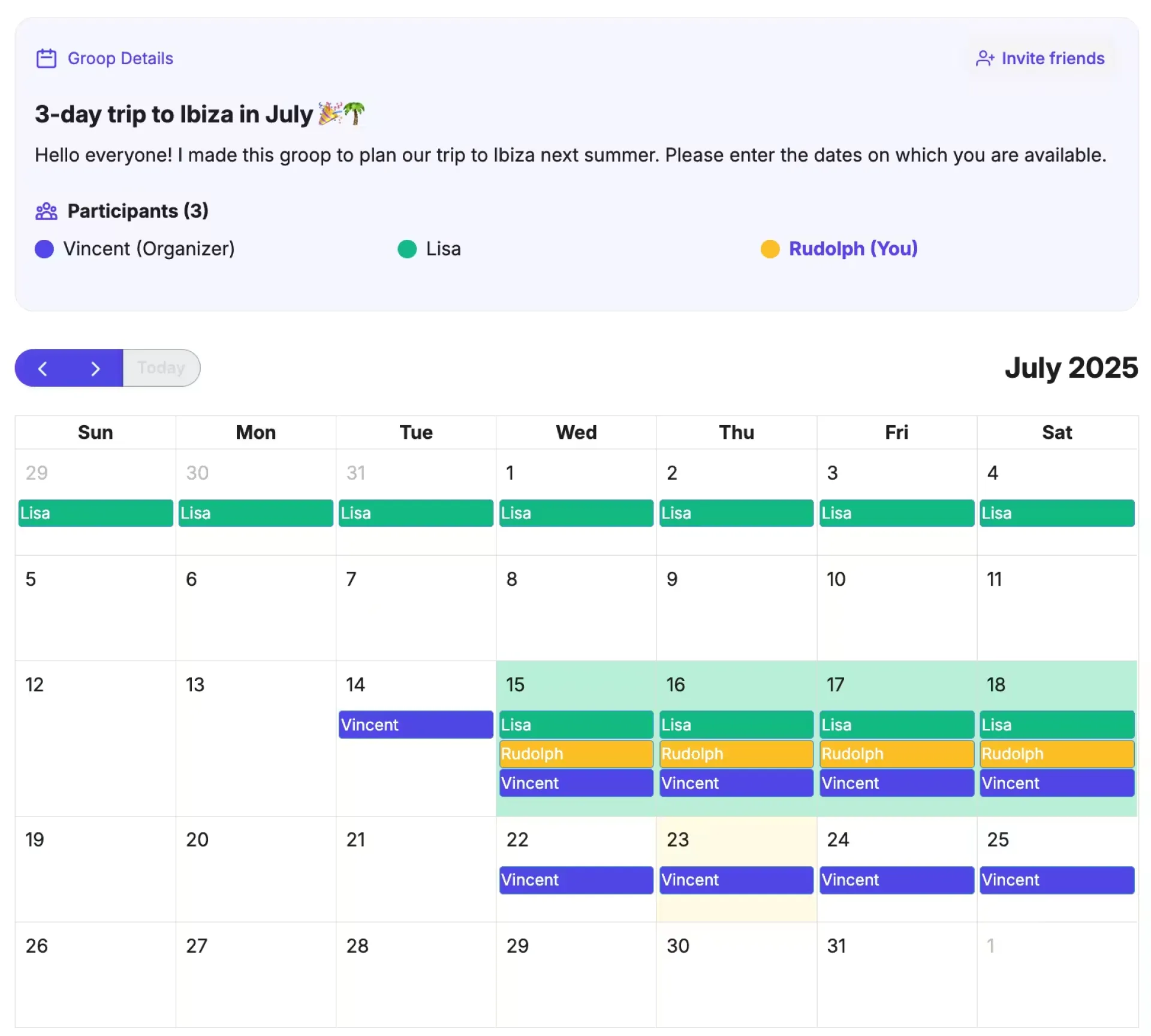
About a month ago, I built Threddr. The idea was simple, help indie founders find their first users by, get this, just hanging out on Reddit.
See, people there constantly ask for tool recommendations like, "Is there a tool that does X?" But those posts usually just get lost or drowned in spam.
These questions were goldmines for builders. My idea? A tool to find them, so you could genuinely help people and get your first users without begging.
so i built Threddr. It'd watch Reddit, spot posts matching your product, and even help you draft a natural, non-spammy reply.
launched it super quietly, and then... waited.
Where I Messed Up Big Time
My biggest blunder? I made it totally free. I thought it'd get people in, help me collect feedback, and I'd figure out money later.
Instead, users signed up, fiddled a bit, and disappeared. No messages, no feedback, just silence.
Point to be noted "Free users aren't invested, so they won't tell you why they leave. I had no clue if Threddr worked."
That silence killed my motivation. I stopped building, stopped talking, and jumped to a new idea. I also thought it'd go viral by itself. Wrong. No one knew about it because I didn't make any noise. A good idea stays good for no one if it's kept quiet.
What I Learned From All This
- Free users are a bad sign. It's not that they're bad people, but they're just not committed. If something doesn't work for them, they won't tell you. They'll just ghost.
- Feedback isn't automatic. You have to make it so people actually care enough to tell you what's up. That usually means they need to be paying you, or they seriously need what you built.
- Marketing is the real grind. I still hate admitting it, but it's true. Talking about what you're building, over and over, is just as important as the building itself. Probably more.
- Motivation is super fragile when it depends on others. If your energy comes from likes, messages, or numbers, you'll burn out fast. The only way to keep going is to find a reason to show up even when no one's cheering.
If I Could Do It Again
- I'd charge from day one. Even if it's just a tiny one-time fee or a cheap monthly plan. Something.
- I'd talk about it while building, not just after. Show examples, share results, ask for opinions. Even if it feels like yelling into an empty room.
- And I'd just keep showing up. Even when it's dead quiet.
Because now I know...
Silence isn't just bad feedback. It's the thing that kills most products.
 $3.6k/mo
$3.6k/mo
In the last post, I shared how you can self-host via npm. If you are looking to run n8n locally for yourself without overhead -- that's the best way!
However, if you are considering of having cron triggers or using n8n as your backend 24/7, then this is a great tutorial for you.
All in all, it's quite simple.
Steps
If you have downloaded Docker, go to Step 3
- Download Docker from Docker dot com — pick the version that matches your computer
- Install it > Open the Docker App on Desktop
- Docker Hub > Search for n8n
- Choose n8nio/n8n > Click “Pull”
- Images > Click the “Run” button to start > Expand the dropdown menu of the Optional Setting
- Ports: you can input whatever port you like, e.g. 5678, under the host port field > Run
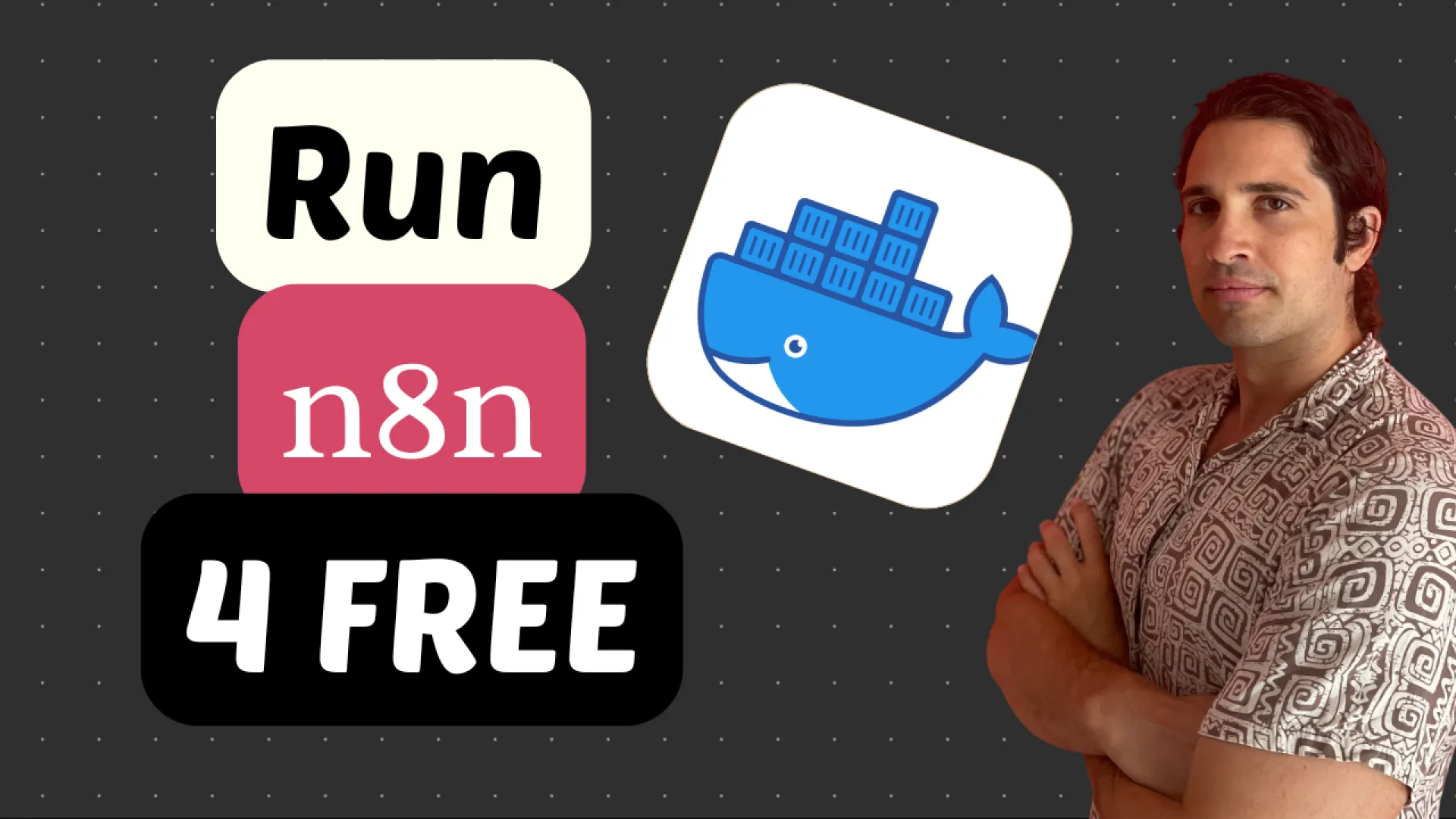
 $3.6k/mo
$3.6k/mo
A client of mine needs to cut down on costs. (So do I!)
Turns out, you can n8n locally for FREE.
It's as simple as:
- npx n8n
- n8n
Then you get : http://localhost:5678

 $3.0k/mo
$3.0k/mo
Hey everyone! Over the past months I have been silently working on a Huzzler 2.0 launch and today, it's time to launch it! 🎉
I've been interviewing founders and listening to your feedback.
These were your biggest complaints on other platforms (X, Reddit,..)
- AI generated content
- Fake gurus with fake MRR claims (course sellers, boilerplate sellers..)
- Your posts get "lost in the noise"
- Bots (+ AI reply bots)
I've been working on a few ways to mitigate these complaints and my goal is to make Huzzler a platform where you can actually learn from other successful founders. No gurus. No fakes. No AI generated content.
New features in Huzzler 2.0
Say goodbye to fake gurus 👏
On platforms like X or Reddit, we often see posts like this:
Made it to $12,000 MRR selling AI customer support agents
A lot of times, these posts and MRR charts are fake and the person is just selling a boilerplate or course.
With Huzzler 2.0, every revenue claim has to be verified. You can verify revenue by connecting your payment provider (for example, Stripe). When you create a post with a revenue claim, our AI moderation will detect it and remove if you don't have the verified revenue.
A strict no-AI space 🤖
A complaint I've been seeing more and more on X and Reddit is the AI-generated content and bots. It's often generic and you can't really learn from it, as the best knowledge comes from someone's personal experience.
Starting from today, AI generated content is forbidden. Our moderators have actively banned people who create full posts with AI.
Beautiful, personalized user profiles 🌍
I've improved the layout and visuals of user profiles. You can now add a country, location and banner to make your profile stand out.
You can also view a revenue chart per product. Meaning you quickly check out how much someones earning and if they are telling the truth.
Phone verification (coming soon)
While we now don't have a problem with bots, we working on adding phone verification for creating posts or commenting. This will introduce some friction, but honestly, I don't mind it. We value quality over quantity.
That's all guys. Let me know if you'd like to see other features on Huzzler and I'll add them to the t-do list

 $3.0k/mo
$3.0k/mo
I have an idea for an app that would help businesses who struggle with converting and transforming files.
An example would be: "I need to convert this excel sheet of leads into this specific XML format so I can import these leads into my CRM"
I know you can do this using chatGPT / Loveable / n8n,... but I'm looking towards building a solution for people who are less technical.
Now my question is, has anyone on here tried validating such a specific idea / problem by sending cold emails to businesses? If so, what was your experience and reply rate? Any tips are welcome
 $199/mo
$199/mo
Guys… I just made my first $199 sale on http://launchdirectories.com! 😭💥 Built it in about 8 hours and launched just 8 days ago. (Everything’s transparent on my X.)
Someone saw value in what I created and decided to support me. That’s the real win. Feeling grateful, motivated, and ready for what’s next!
June: $240
May: $20
April: $0
March: $0
February: $0 — I just started coding.
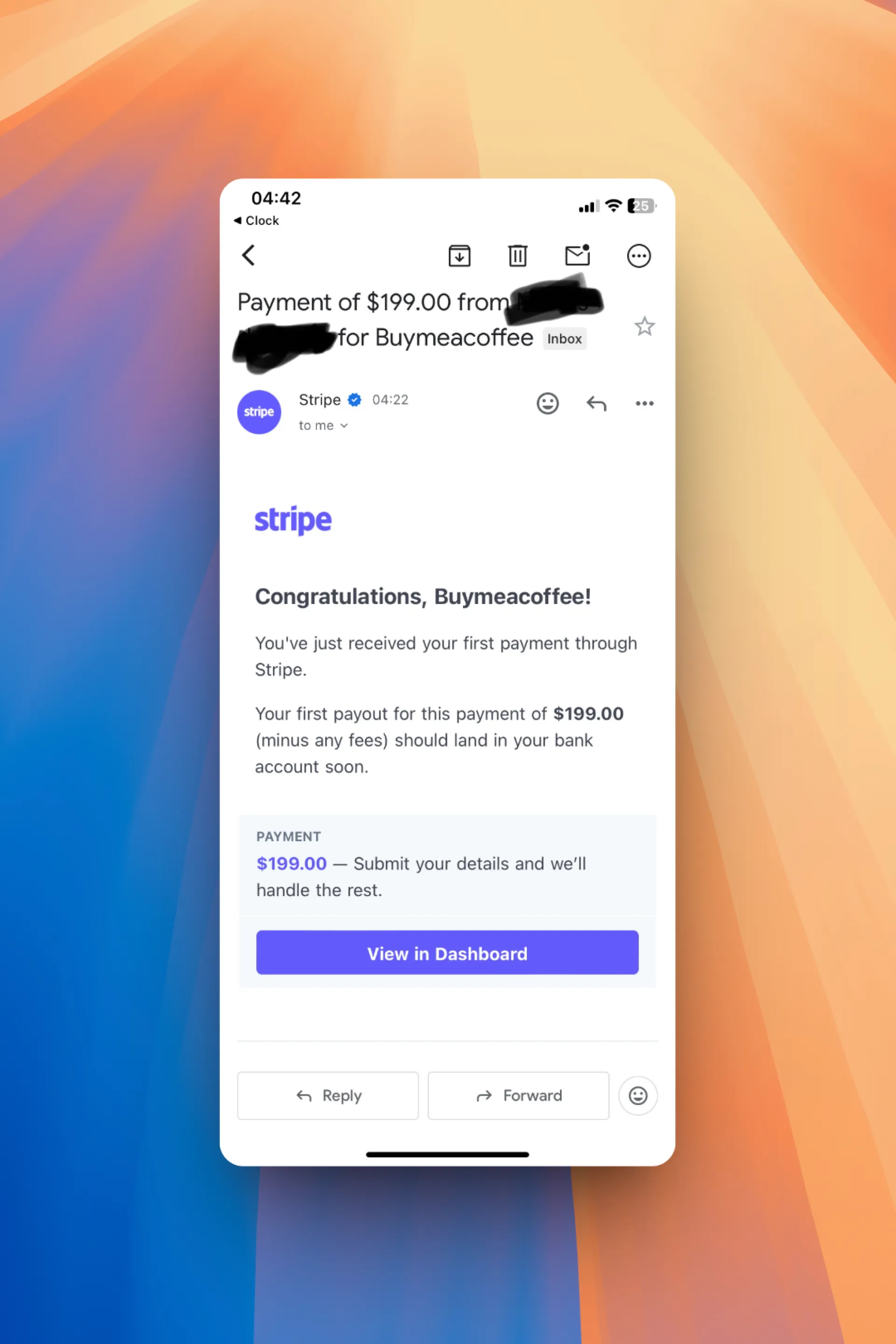
TL;DR: Built a marketing automation system using ClaudeAI + Google Sheets + Zapier + Buffer that costs $0.15 per week and generates personalized social media content in my writing style.
Hey Huzzler Fam,
Background: I'm a CTO who recently went solo founder, and marketing has been my biggest nightmare. I kept seeing posts about "vibe marketing" success stories but nobody ever shows the actual implementation. Guys like Greg Isenberg show just the outcomes of how the results look.
So I got frustrated and decided to build my own solution for my project.
What I built:
- Claude AI analyzes my writing style and generates content targeting my specific audience
- I then take this through a keyword algo and
- through a humanizer algo which makes it sound like me
- next, my node project pushes this to google sheets
- in Google sheets I switch the status to → confirmed if I like the content
- Zapier picks it up
- Buffer schedules everything for optimal posting times
- Total cost: $0.15 per week (just the AI API calls)
**The process:**
1. Feed Claude examples of my writing and audience data
2. AI generates 7 days worth of posts in my voice
3. Zapier automatically pushes to Buffer at scheduled times
4. Buffer schedules across all platforms
**Results so far:**
- Saves me 5+ hours per week
- Content quality is surprisingly good (matches my writing style)
- Engagement rates are similar to my manual posts
- Scales infinitely for the same cost
Pretty much all I do is `npm run generate:weekly` and I get 2x posts a day scheduled on X and 3x a week
For other founders struggling with marketing: The AI isn't magic - it still needs good prompts and your authentic voice as input. Pretty much the old rule applies - garbage in, garbage out. Gold in - gold out.
The real win is consistency. Most of us are terrible at posting regularly. This solves that problem for basically free.
I recorded the entire 3-hour build process in my X account, if anyone wants to see me doing it live here it is

 $3.0k/mo
$3.0k/mo
Reach thousands of active founders looking for tools to solve their problems. Our Featured Product placement guarantees premium visibility with 7,458 weekly impressions for post ads (like you are reading right now).
Get direct access to your perfect target audience - people actively building, launching, and growing startups who are ready to invest in solutions like yours. Limited weekly slots available.
Reserve yours now at huzzler.so/advertise
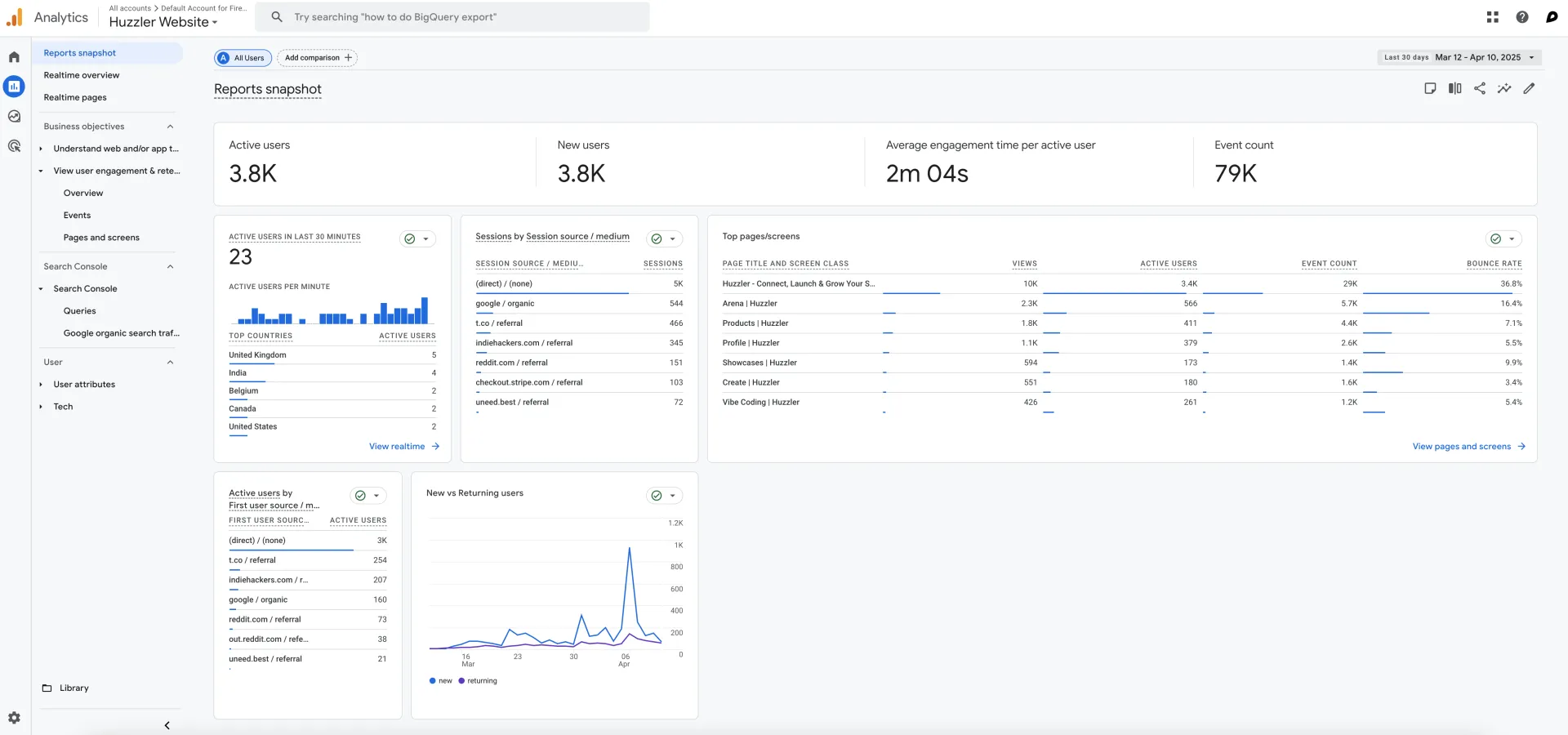
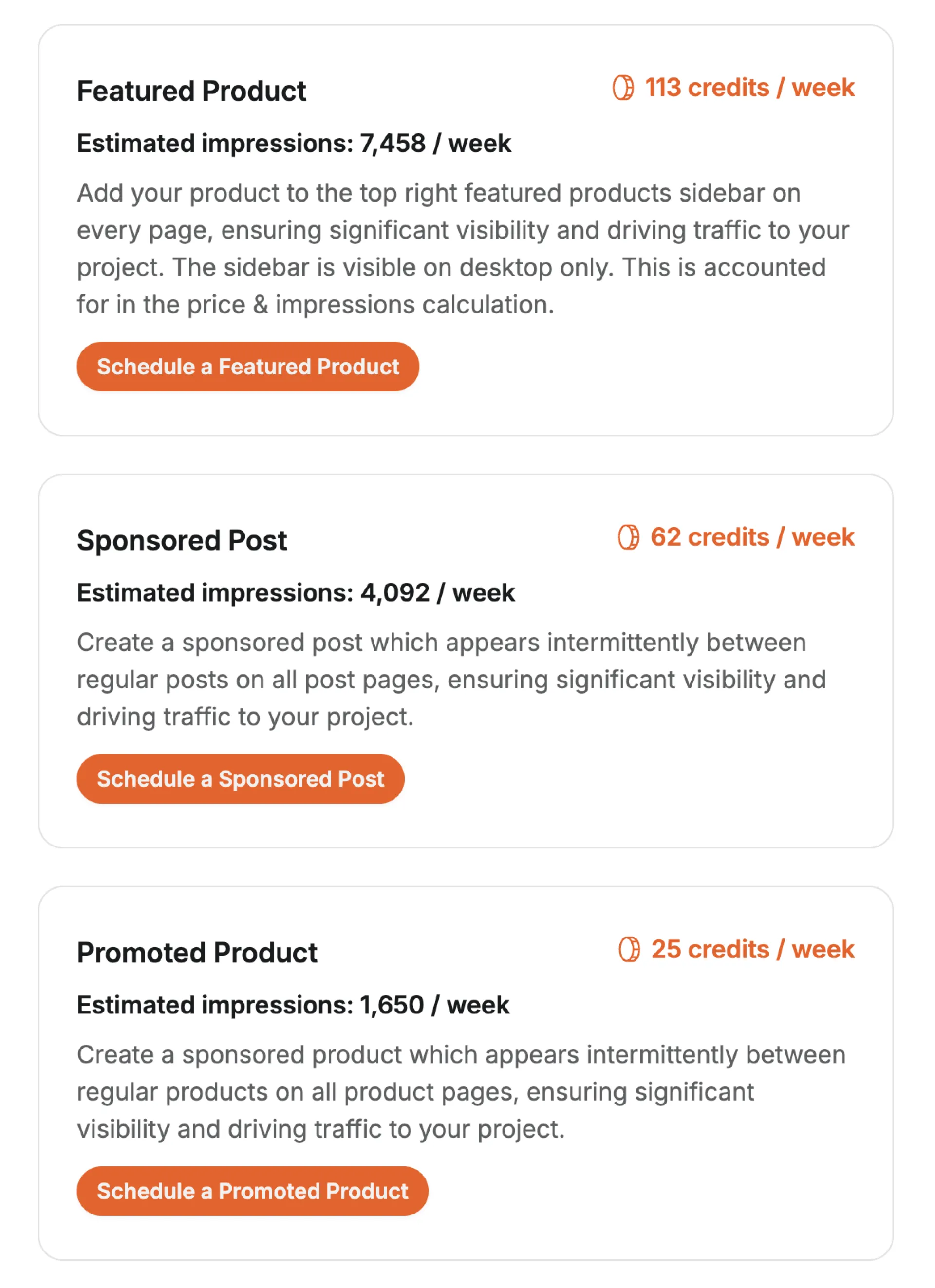
 $199/mo
$199/mo
it’s a simple wedding timeline – my client runs weddings and wanted to show the schedule on a tv so guests know what’s next
the app is in polish 🇵🇱 but i ran it through google translate so you can understand what it does 😅
not a huge deal, but 4 months ago i didn’t know how to code
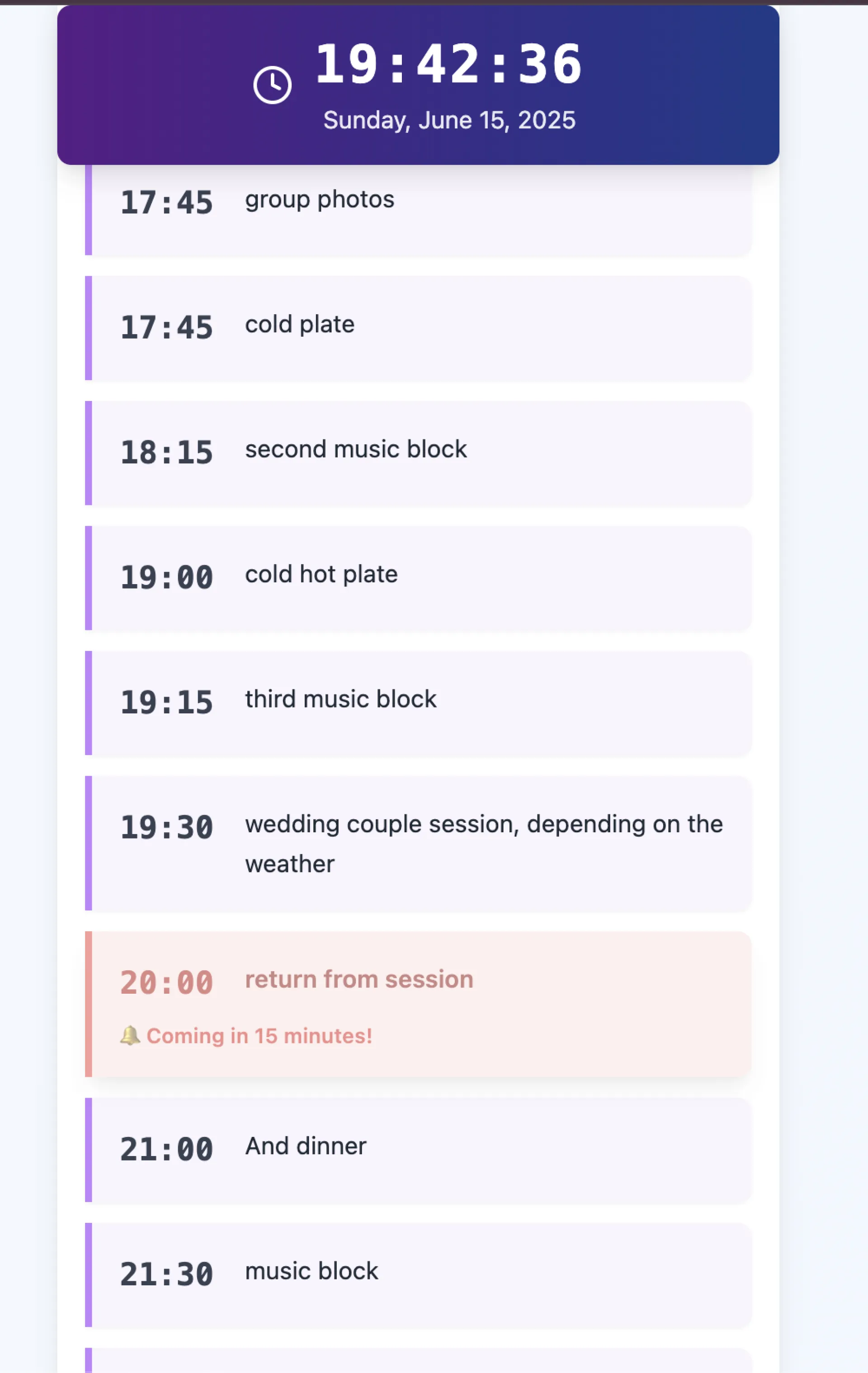
- google oauth is a must, 90% of users prefer it.
- skip free trials, charge from day one.
- market shamelessly, talk about your product everywhere.
- respect unsubscribers, their feedback is gold.
- post-launch = 80% marketing, 20% tweaks.
- use your own saas, spot and fix bugs firsthand.
- engage users, email, text, and talk to them often.
- consume quality content, read books, watch documentaries.
- think bigger, don't settle for $10k/month when $100k is possible.
- detach from ideas, if it doesn’t make money, move on.
- landing page = apple quality, sleek, modern, and polished.
- mvp = core features only, follow the moscow framework.
- retention drives revenue, 70% comes from existing users. reduce churn.
- price on value, not competition.
- brand matters - logo, responsiveness, good language.

A little backstory about me I'm a full stack engineer, but I've always leaned more toward backend. During university, my thesis focused on Big Data exploring Hadoop, data lakes, and data meshes. That project sparked a lasting interest in data engineering, which I'm now seriously considering pursuing.
As we all know, building a personal brand is important for standing out and building credibility. I started doing that on X, originally for a different purpose. But after just 3 weeks, I began to see the power of building in public. (If you're on the fence about it, I highly recommend giving it a shot.)
Now I’m thinking of shifting the focus of my “brand” from promoting my tool (which may turn out to be a failed project) to documenting and sharing my data engineering journey instead.
What do you think about this pivot?
 $3.6k/mo
$3.6k/mo
This flow was born out of the success of its predecessor -- a simple n8n automation that invoked the Fal AI API.
I wanted to go deeper in Veo3's capabilities.
I have to say it's great at generating ads.
Check this (Adidas) ad out !
In a nutshell the workflow is divided into three main phases:
- Create Veo3 Video
- Wait for Video Processing
- Post on YouTube
Check out the full demo here.
Let me know if you build anything -- link it below !

 $199/mo
$199/mo
I don't know if it's luck, but since last week. I've had way more motivation and money is actually starting to flow in! About 3-4 months ago I built dubaidiscoverer.com in Lovable - took me forever to figure out that Lovable doesn't have SSR and will never get indexed by Google properly. I wrote a Reddit post about it that blew up and even Lovable's CEO replied to it.
Spent several days migrating from Vite to Next.js to boost my Google rankings - but honestly, all that effort was for nothing. Google results are still dead, and I was basically ready to abandon the whole thing since I have other projects going on.
Then out of nowhere today I get a notification that someone bought Dubai attraction tickets through my affiliate link and I made $10.50. No clue how it happened but someone actually bought something even though I'd already written the project off as a loss.
It's still pennies and doesn't even cover the domain cost - but maybe it'll motivate some of you. Sometimes things work out even when you think they're completely dead.
Honestly, I'd probably sell this project for pocket change at this point because I have zero ideas left for it. It's just directories about Dubai and Abu Dhabi attractions - nothing fancy.
I know it would sound better if I said my dead project made $1000 passively, but I hope this was at least an interesting read for you guys.
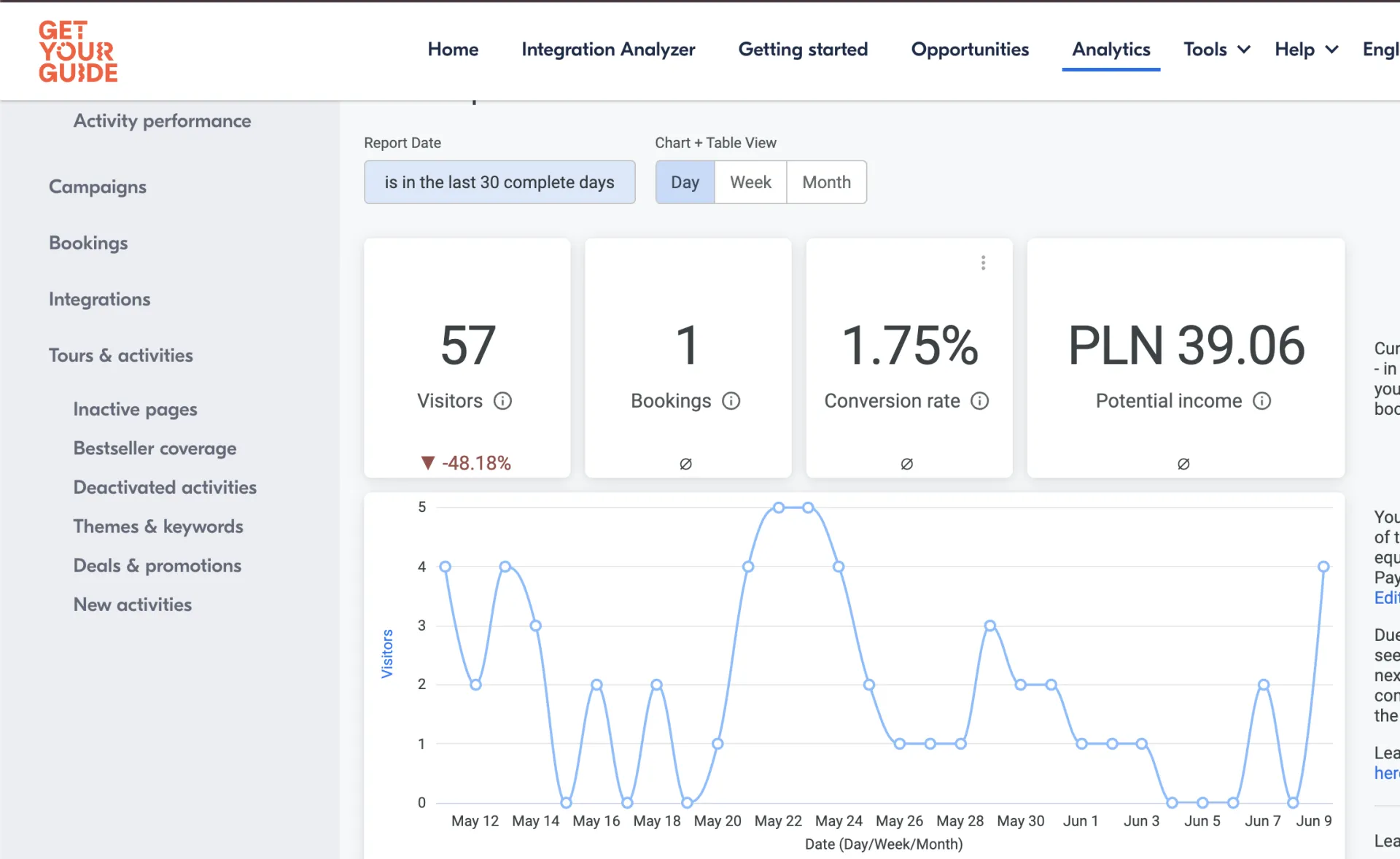
Hey Huzzler community! 👋
I'm thrilled to finally introduce Pactando.com, financial analysis platform built specifically for startups, entrepreneurs, and lean teams (1-10 people).
Here's how Pactando can empower your financial decisions:
- Quick and easy ROI calculations
- Clear, actionable startup valuation
- Bankruptcy risk assessments (because it's better to know early!)
- Straightforward financial health checkups
- Ready-to-use business plan templates
- Simple yet insightful market research & competitor analyses
Who'll benefit most (ICP)?
- Early-stage founders (1-3 people) working on validating their ideas.
- Growing teams (5-8 people) aiming to attract investment.
- Scale-ups (up to 10 people) striving for optimal growth.
- Solo entrepreneurs who need real financial insights but don’t have a finance team.
Why did I build this?
As an entrepreneur myself, I’ve faced the frustration of tools either being overly complex and pricey or disappointingly basic. Pactando is my effort to bridge that gap—practical, intuitive financial tools without the hassle or cost of enterprise solutions. I would like to highlight that is an MVP.
Why Pactando stands out:
- Instantly get actionable insights powered by friendly AI.
- Designed specifically for busy teams without a financial background.
- Combines multiple essential financial tools into one simple platform.
- Easy-to-understand results without the jargon.
I’d genuinely love your candid thoughts:
- Does this resonate with your experiences and needs?
- How intuitive do you find the design and user experience?
- Are the pricing plans accessible and fair for smaller teams?
- Any features you'd love to see, or perhaps those we might reconsider?
- Would you actually use Pactando, and recommend it?
Dive in, give it a spin, and let me know what you think! Your honest feedback, especially as fellow founders, means a lot.
Thanks a ton for checking it out!
Here’s the link: pactando.com


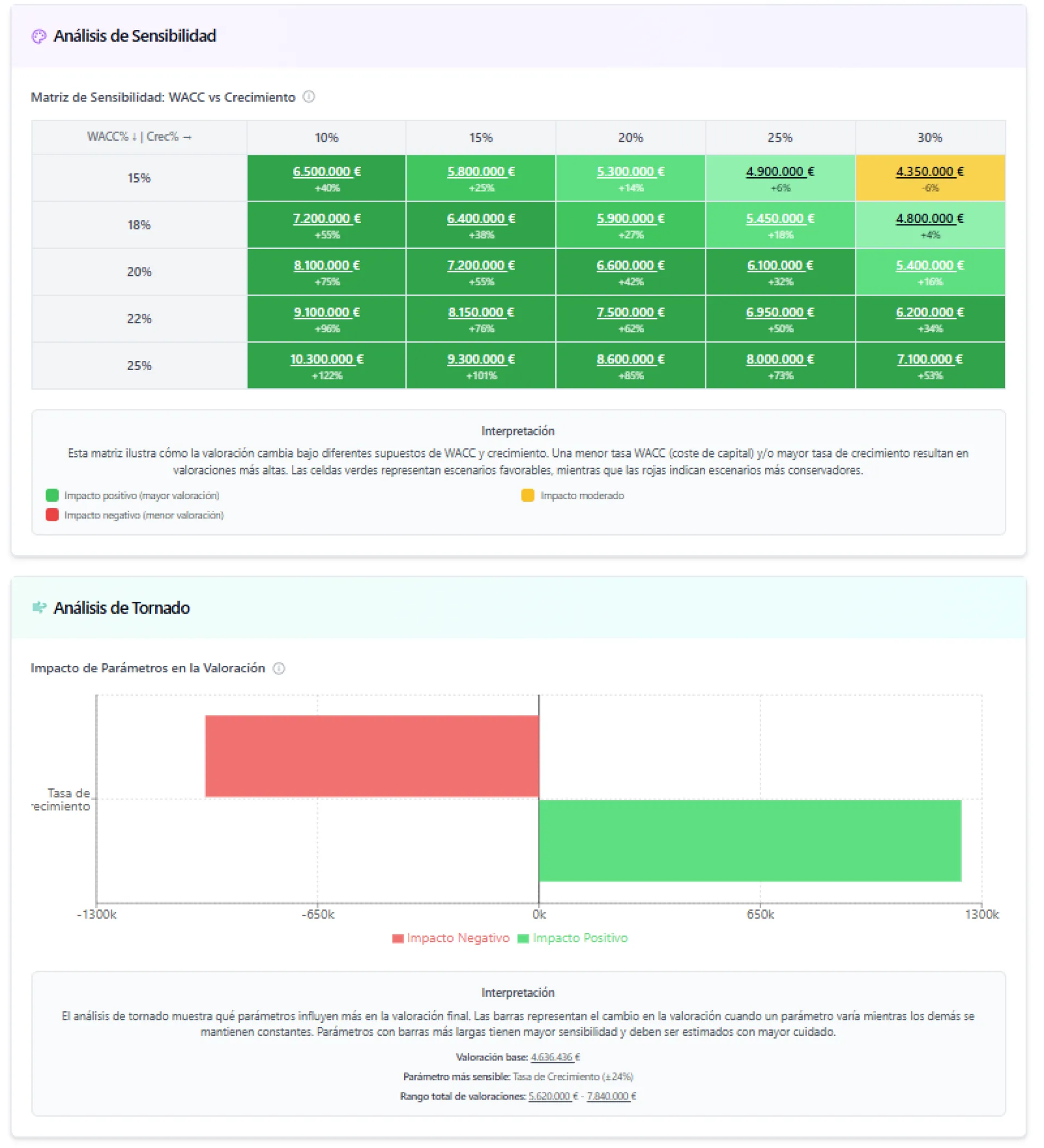
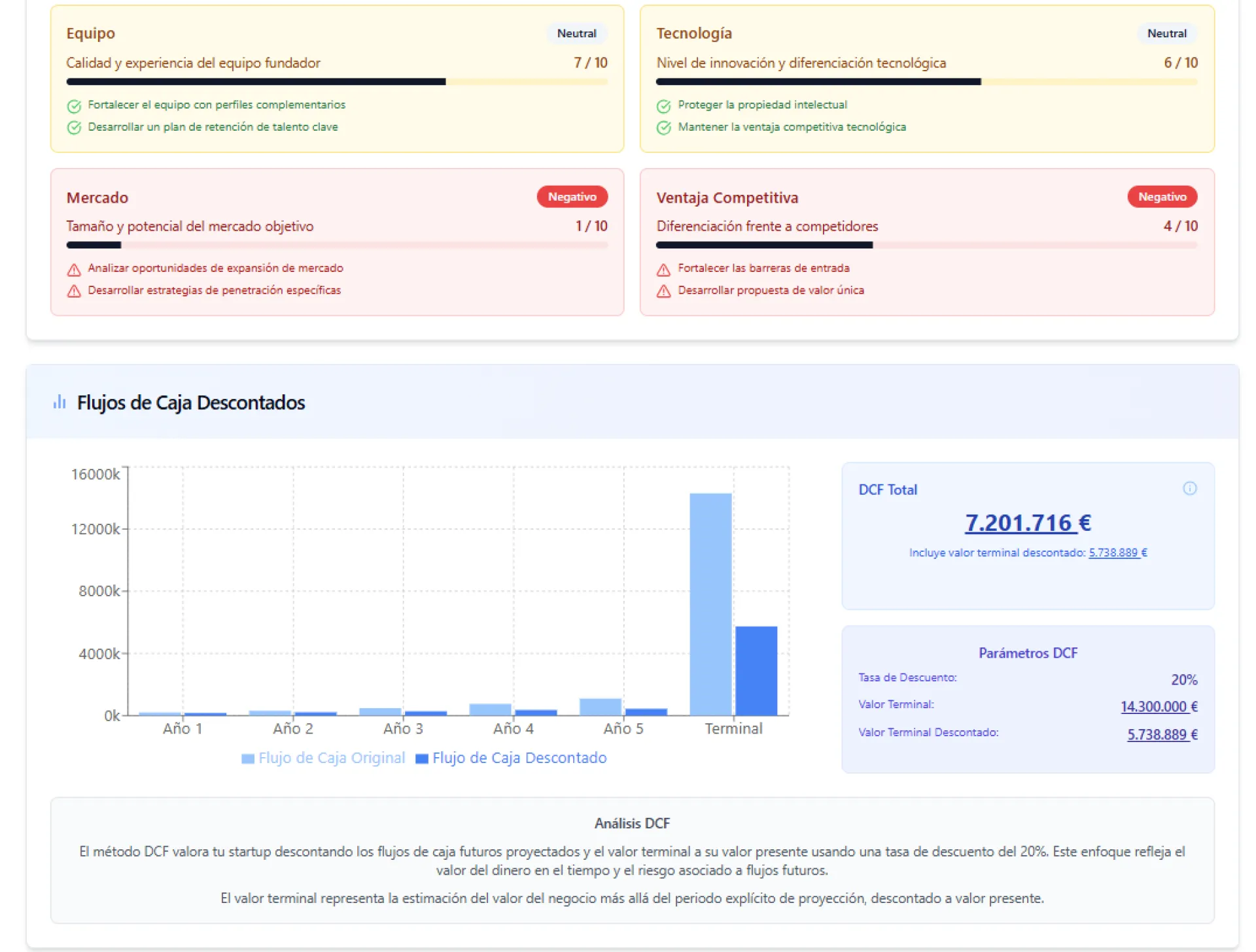

Hey Huzzlers..
I created a directory that serves as an online side hustles index where you can browse 370+ side hustle ideas, work-from-home opportunities, and easy ways to make money fast.
This is a totally free directory, updated monthly - No sign-ups required, no strings attached. ✨
It won Product of the day on MicroLaunch the other day.
Now if you're feeling supportive, I’m asking you to check it out and share your "Roast" feedback on ML.
👉 https://microlaunch.net/p/esidehustles
Happy to support back with your future launches.
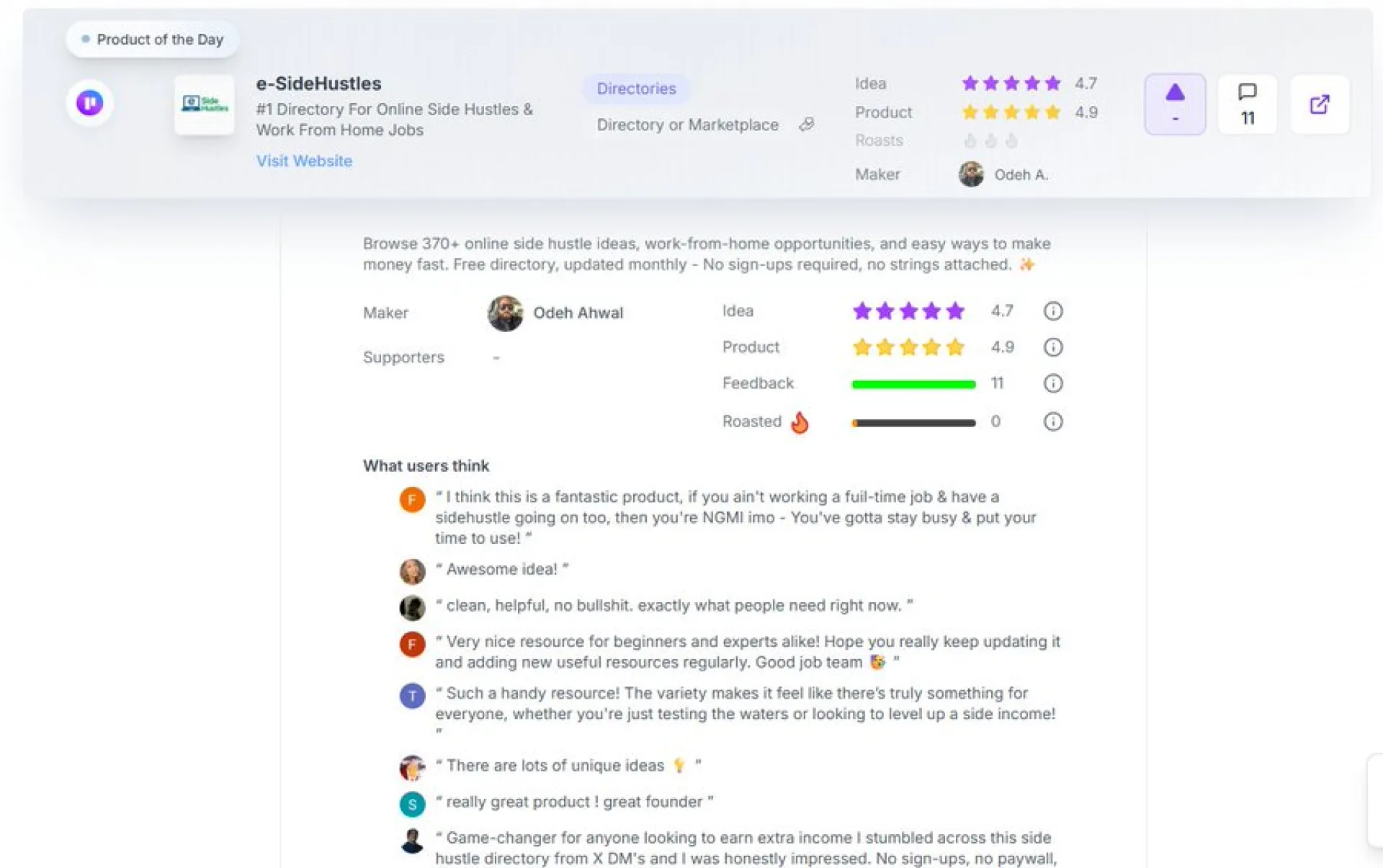
 $3.0k/mo
$3.0k/mo
Hey everyone 👋 For those interested, we've added new advertising options ranging from 1,659 up to 7,458 weekly impressions.
Only until April 30th , we're doing a sale were you get 25 bonus ad credits per 100 credits purchased️
Advertising options: huzzler.so/advertise/options-pricing
Upcoming features for Huzzler
Now that the development on the advertising system is done, we're focusing on making Huzzler the best platform for founders. Here is a list of a couple of the planned features we have:
- Automatically add your product to "alternative to" so people can find your products through SEO
- Be able to save / bookmark valuable posts in folders
- Accountability system where you can define goals and celebrate milestones with the community weekly (you will be held accountable by the community) 😉
- A problem/solution directory where users can submit real world problems they have. This will provide Huzzler users with a list of already validated product ideas. You'll also be able to notify the user who posted the problem when your app is ready, that way you already have a paying customer ready.
- Gamification: have a level and xp. Increase your level by contributing in the community
- Referral system: gain advertising credits by referring people to Huzzler
- OAuth, login with Google
- Embeddable badges for the launch Arena
- Be able to link a product with a showcase
- Better filtering / sorting in product pages (filter by category, sort by date,..)
- Coming soon tab: all projects that are soon to be relelased
- Previous launch arena winners pages
- .... and many more features
Let me know if you'd like to see other features as well 😁
Thanks for reading guys!
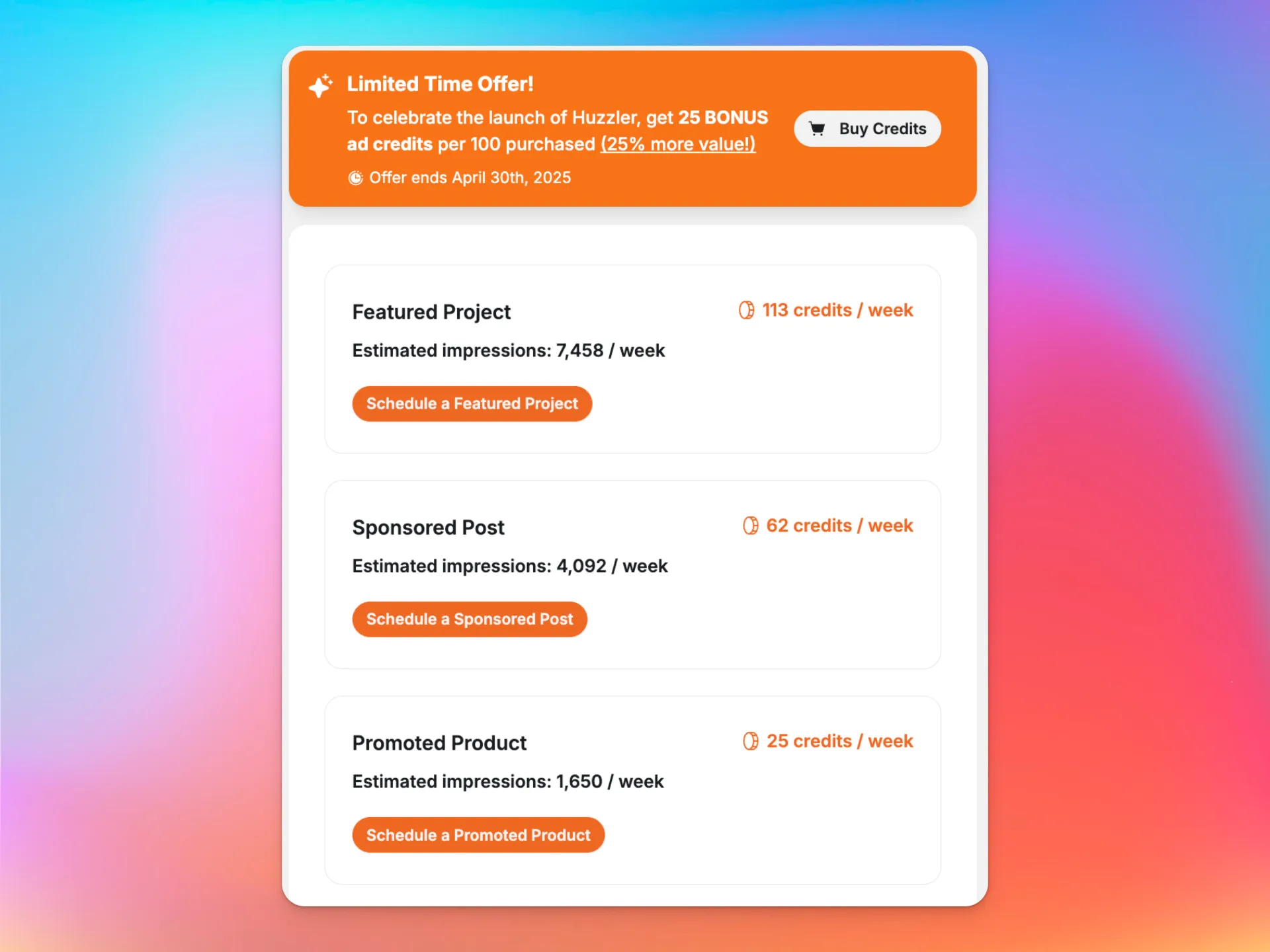
Hey Huzzlers..
I built an AI food detector that guesses what you're eating
It won Product of the day on MicroLaunch
Now if you're feeling supportive, I’m asking you to try it and share your "Roast" feedback on ML.
👉 https://microlaunch.net/p/whatthefood
Let me have it. Brutally. No mercy.
Happy to support back with your future launches.

What are the best tools to generate app keywords for Google Playstore?
Looking forward to your suggestions!!
 $3.6k/mo
$3.6k/mo
I have been really active on YouTube in the last 2 months.
My niche is mostly automations using nocode tools, specifically n8n.
Yesterday, I got notice that Veo3 is accessible by API.
So I decided to make a video about : Veo3 Video creation using n8n
I posted on YouTube and Medium.
The result ?
Top of the ranks on Google Search for 'n8n veo3 tutorial'
This wouldn't have happened, if I didn't hustle for it.
Keep making.
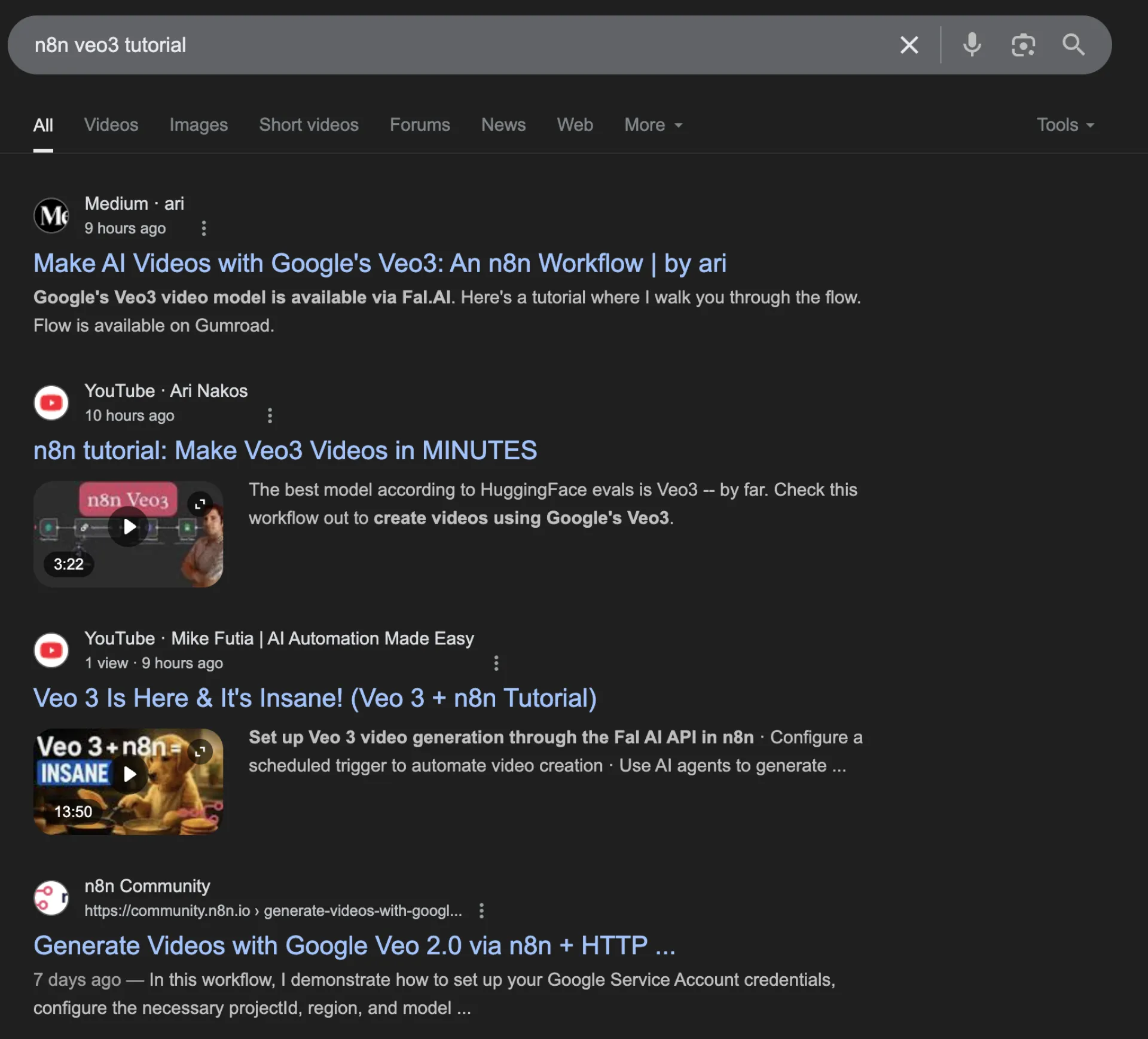
 $3.6k/mo
$3.6k/mo
Today I got notice that the Veo3 API is publicly available through fal ai.
So I made a video that walks you through.
It's an impressive model BUT quite expensive. It's ~1$ per video second.
Here's the demo!
A bit about the flow.
How It Works
1. A user submits a video prompt through a form.
2. An AI agent (using OpenRouter's Google Gemini 2.5 Flash model) refines the user's prompt into a detailed "script-to-screen" format suitable for video generation.
3. The refined prompt is sent to the FalAI Veo 3 model via an HTTP request to generate the video.
4. Details of the video request, including the date, the refined prompt, and the request URL, are stored in a Google Sheet.
Setup
To run this workflow, you need to set up credentials in n8n for:
* OpenRouter: Generate API key from your OpenRouter account.
* Fal AI: Generate API key from your FalAI account
* Google Sheets: Uses OAuth 2.0. Connect by authenticating your Google account.

1. micro-content on x and linkedin
- post 1-2 sentence tips daily about your niche.
- join trending threads on x with thoughtful replies to get eyes on your profile.
- pin a post linking to your landing page, but make it value-first (like a free guide).
- spend 20 minutes a day engaging, and you’ll build a following without ads.
2. collaborate with other founders
- dm 3 to 5 indie hackers in your space for a newsletter swap or blog guest post. i got 200 signups from one swap.
- offer to write a case study for a complementary tool’s blog - free exposure, high trust.
- join indie hacker meetups (virtual or local) to find collab partners.
- keep it low stakes, small partnerships often lead to bigger ones.
3. low-cost seo experiments
- target super-specific keywords with low competition, like “task manager for remote teams 2025.” i rank 3rd for one and get 10 signups a month.
- write one 1000-word blog post a month packed with practical tips, not fluff.
- use free tools like answer the public to find what your audience searches.
- link to your signup page subtly in every post to drive conversions.
4. leverage user feedback loops
- email every new user after 7 days to ask what they love or hate. i fixed a ui issue from one reply and cut churn by 5%.
- add a feedback form in your app with one question: “what’s one thing we could do better?”
- share quick wins (like new features) on x to show you listen.
- turn happy users into case studies for your site - real stories convert.
tiny bets let you test, learn, and grow without risking it all.
i would like to know what small experiments are you running for your saas..
PS. I give honest feedback so you don’t waste time, money, or effort. Get any kind of help you need at ZeroToCustomers .com
